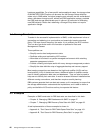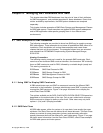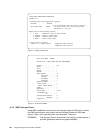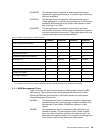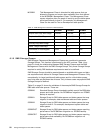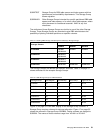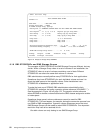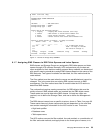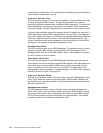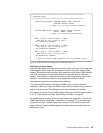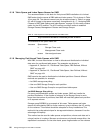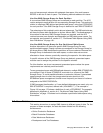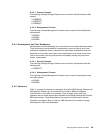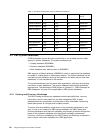54 Storage Management with DB2 for OS/390
combinations of these names. This provides the installation with great flexibility in
implementation alternatives, such as:
High Level Qualifier Filter
The ACS routines contain a list of high level qualifiers. These qualifiers are used
to assign the specific SMS classes. The high level qualifiers can provide a
meaningful distinction between data of different DB2 subsystems. This method is
recommended as a starting point, because of its simplicity. Some installations
may have multiple, complex requirements and may prefer to use another method.
A variant of this method is used in the example shown in Appendix A, section A.4,
“DB2 Table Spaces Using SMS, Existing Names” on page 165. In this appendix,
Figure 92 on page 168 shows an ACS routine that assigns Management Classes
based on a high level qualifier (which is also the DB2 subsystem name). The
variant introduced is that certain databases (name starting with B) in the DB2D
susbsystem are assigned a separate Management Class.
Database Name Filter
The ACS routines contain a list of DB2 databases. The database name is used to
assign the specific SMS classes. All table spaces and index spaces within a
database would have the same SMS classes. When a new database is created,
the ACS routine has to be modified.
Table Space Name Filter
The ACS routines contain a list of DB2 databases and table and index spaces.
These names are used to assign the specific SMS classes. Each table space and
each index space can have distinct SMS classes. When a new table or index
space is created, the ACS routine has to be modified. This technique is only
manageable in static installations. A simple example of an ACS routine using this
method is shown in Figure 18 on page 55.
High Level Qualifier Codes
The high level qualifiers contain a Storage Class code and a Management Class
code. These codes are used to assign the specific SMS classes. Multiple high
level qualifiers are required to obtain a meaningful distinction between data with
different requirements.
Database Name Codes
The DB2 database names contain a Storage Class code and a Management
Class code. These codes are used to assign the specific SMS classes. All table
spaces and index spaces within a database would have the same SMS classes.
The ACS routine does not need maintenance for new databases. This method
provides a resolution at database or application level.



